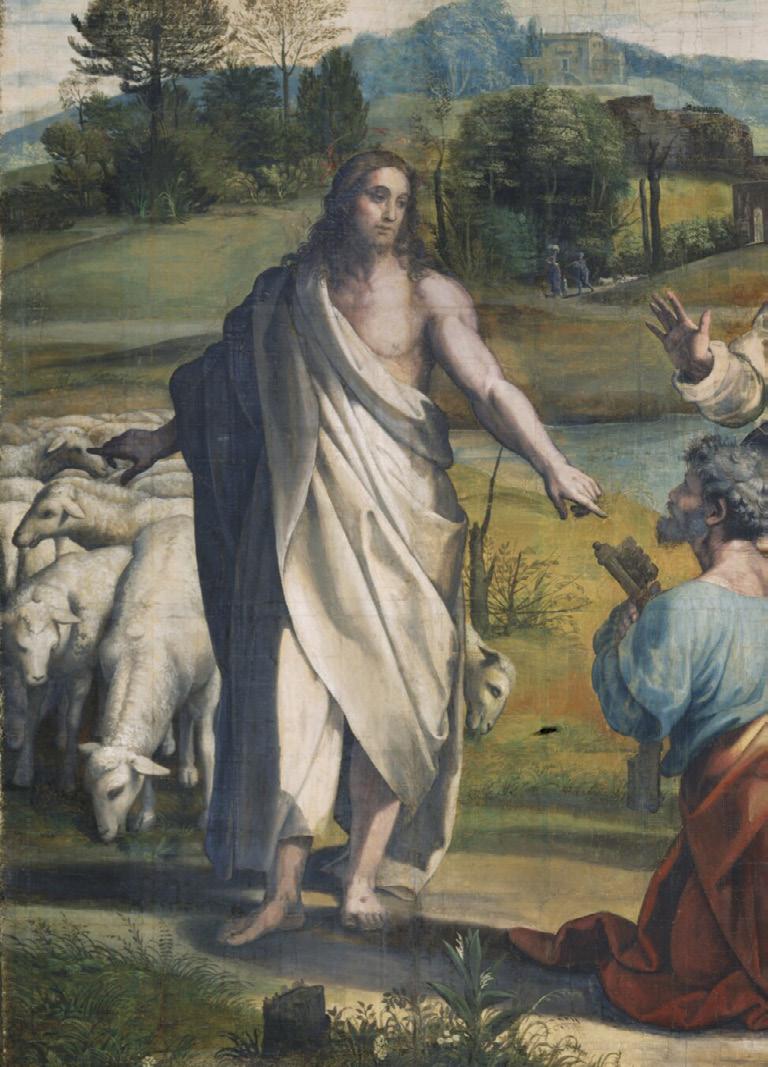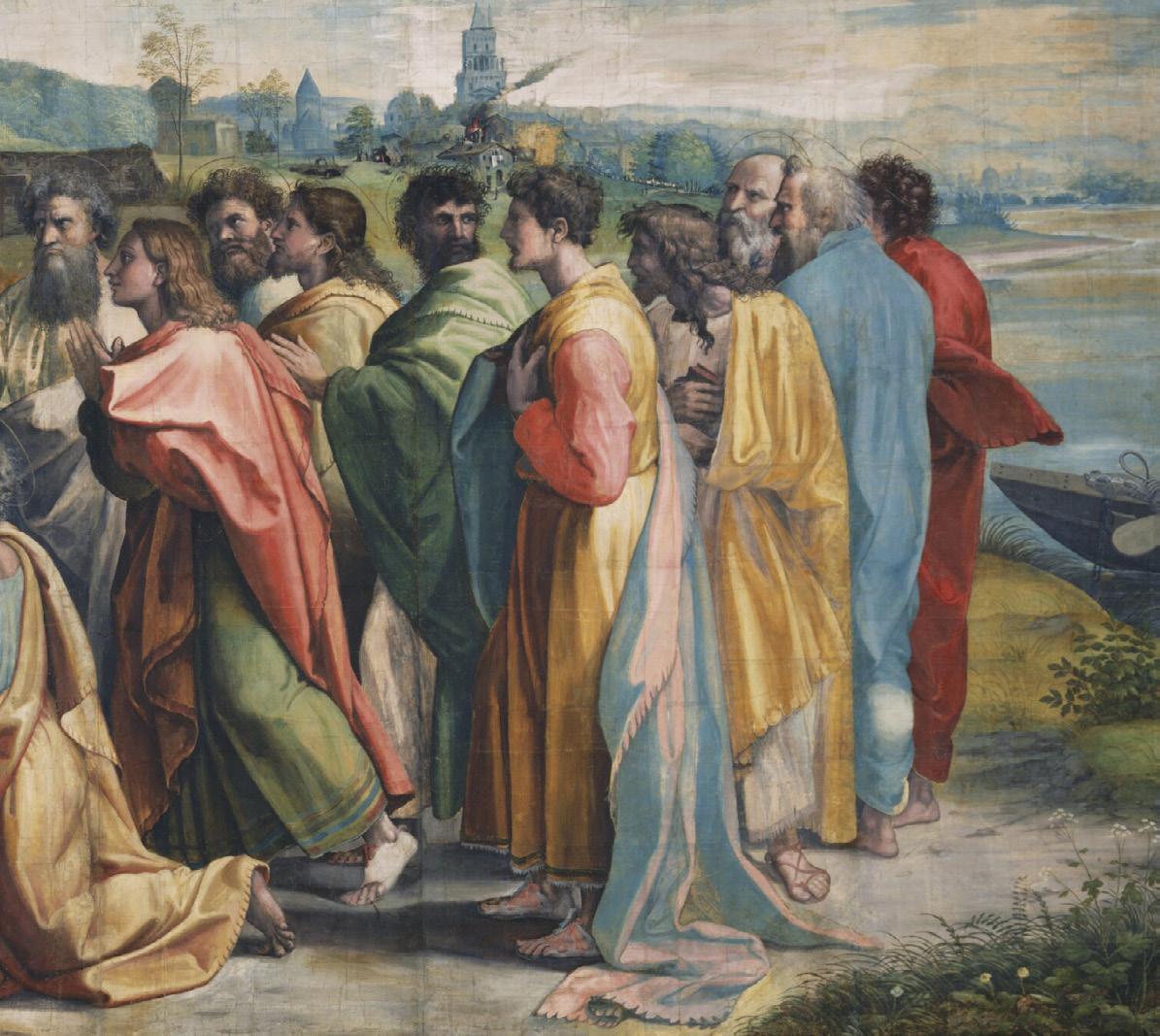
6 minute read
The Way of Beauty
Caroline Farey on Pope Benedict XVI and the Vocation of Sacred Art
Pope Benedict XVI’s interest in sacred art, sacred music and ecclesial architecture was because of their “vocation” which is to make manifest the beauty of God’s Trinitarian love and his entire plan of salvation in Christ and his Church.
“The truest beauty is the love of God, who definitively revealed himself to us in the paschal mystery… The beauty of the liturgy is part of this mystery; it is a sublime expression of God's glory and, in a certain sense, a glimpse of heaven on earth. … Beauty, then, is not mere decoration, but rather an essential element of the liturgical action, since it is an attribute of God himself and his revelation. These considerations should make us realize the care which is needed, if the liturgical action is to reflect its innate splendour.” (S. Caritatis 35).
Pope Benedict XVI spoke continually of beauty, especially but not only, in relation to the liturgy. It was never far from his mind or his speeches. The via pulchritudinis, the way of beauty, became an ever-present principle for him because God is beautiful and therefore everything of God, from God, about God, is beautiful; the way of beauty is a visible way to God.
Pope Benedict XVI’s passion for truth was also a passion for the splendour of truth, veritatis splendor; “...truth carries with it the joy and splendour of spiritual beauty” (CCC 2500). “The relationship between truth and beauty is inseparable and therefore we need beauty.” We need it, “above all, when it is a matter of evoking what is beyond words: the depths of the human heart, the exaltations of the soul, the mystery of God” (CCC 2500).
In an extraordinary gesture, for his visit to the UK in 2010, Pope Benedict XVI chose to loan four of the great Raphael tapestries that hang in the Vatican palace to the V&A Museum to be hung beside the cartoon drawings made by Raphael for these very tapestries. With this gesture he demonstrates the spiritual power of sacred art to manifest the veritatis splendor, in this case, of the divine institution of the papacy.
The future Charles I bought seven of the twelve huge cartoon drawings in 1623. Three of the four tapestries that went to London were on the subject of St Peter, of whom Benedict was, of course, the direct successor. These were, the miraculous draught of fishes (Lk 5:1-11), Christ’s charge to Peter (Jn 21:15-19) and Peter’s healing of a lame man (Acts 3:110). The fourth was of the miracle of St Paul at Lystra.
Just as the protestant reformation was breaking Pope Leo X commissioned Raphael in 1515 for the designs of twelve tapestries depicting the apostles of Rome,
Saints Peter and Paul. They were to hang in the Sistine chapel along the lowest story. Michelangelo had finished the ceiling only a few years earlier in 1512 and Raphael’s designs were to be in harmony with Michelangelo’s work, hence the similarly sculpted muscular figures.
The cartoons were made of hundreds of pieces of paper stuck together and fixed to a wall for the scene to be painted. As cartoons for tapestries, the finished paintings had to be cut into strips, each one the width that a loom could produce. These were then sent to the finest Belgian weavers of the day to reproduce the scenes as closely as possible. The strips of painting and the strips of tapestry were then stuck and sewn back together.
The painting here shows the resurrected Christ dressed in white with the nail wounds visible in his hands and feet. Eleven apostles, having arrived earlier by boat (visible furthest to the right), have just finished breakfast with Jesus (Jn 21:15) when he turns to Peter to ask, “Simon son of John, do you love me more than these?”. Peter is portrayed on his knees to give his answer: “Yes, Lord, you know that I love you,” and Jesus says to him, “Feed my lambs”.

With one hand Jesus points to the sheep and lambs behind him; with the other he points to the great key that Peter is clutching. It is as though he is showing Peter what his keys are for: to feed, look after and bring home Christ’s sheep. Pope Benedict’s message was also clear. As successor to Peter, he holds the same keys and he was coming to feed Christ’s lambs and sheep in the UK with a petrine love and obedience to the Lord Jesus.
In the strip of landscape visible between Jesus and St Peter, the dark hole in the ground alerts us to the holes of the nail wounds and to the one grazing lamb on Jesus’ right, indicating Jesus himself as the lamb of God. Just above the sheep’s head an old tree trunk (the stump of Jesse) is lifeless while a single new shoot has many, young, leafy branches beside it (Christ and his Church).
On the verge, immediately below Christ’s erect figure, there is another stump that seems to signify the tree of the cross, the instrument of death now destroyed by the resurrection, with white flowers blooming around it. Significantly for the turbulent time in which the painting was made, there is a fire breaking out just below the great Church, the smoke of which can be seen wafting across the base of the tower to the right.
Across the river behind Jesus there is another flock of sheep. These are being led by a woman with children followed by a man with a staff, through an archway lit by the dawn light; an image of the Church and its authority being led by the Blessed Virgin Mother of Christ and new, “mother of all the living” (Gen 3:20).
Pope Benedict XVI’s mastery of the significance of truth and beauty in art is evident, finally, in his chairmanship of the editorial committee of the Catechism of the Catholic Church There, he oversaw the inclusion of works of art to introduce each of the four parts, demonstrating the Catechism’s text: “Sacred art is true and beautiful when its form corresponds to its particular vocation: evoking and glorifying, in faith and adoration, the transcendent mystery of God – the surpassing invisible beauty of truth and love visible in Christ” (CCC 2502).











